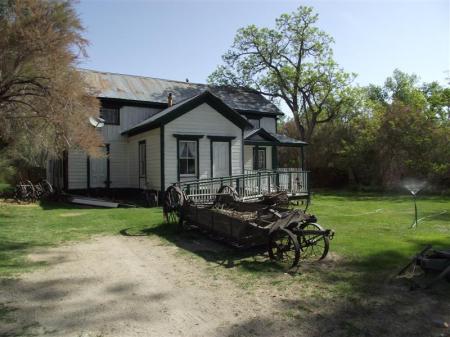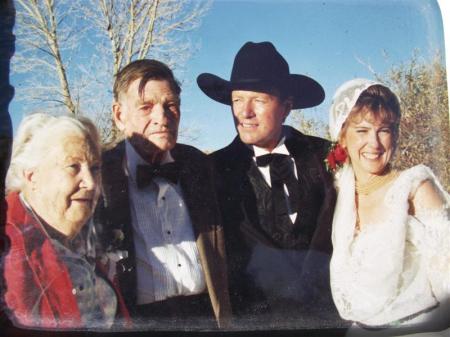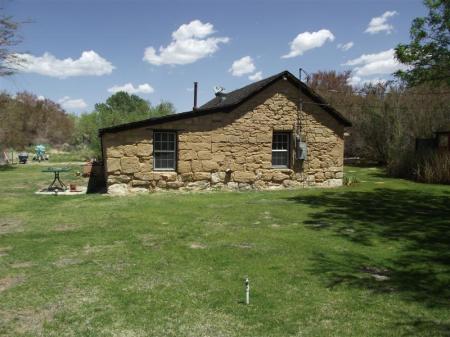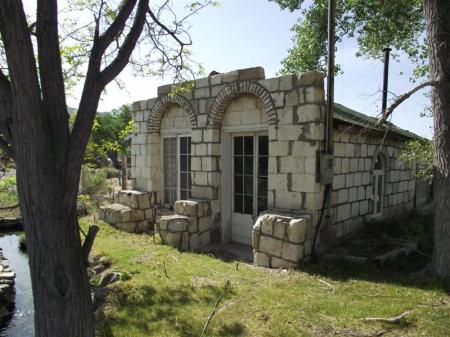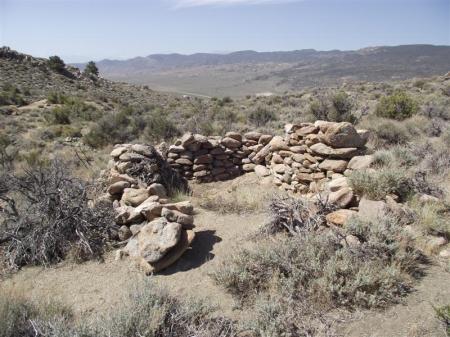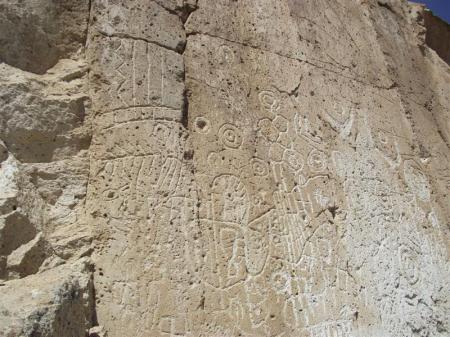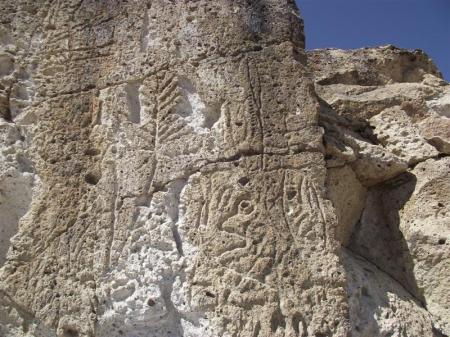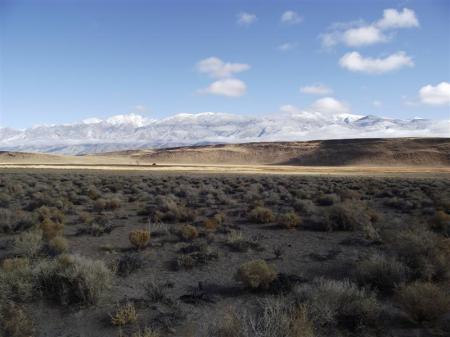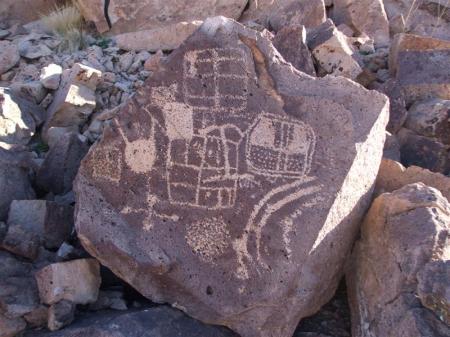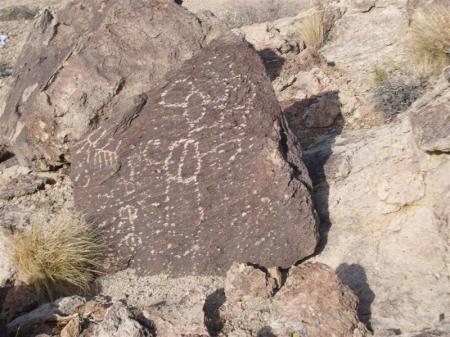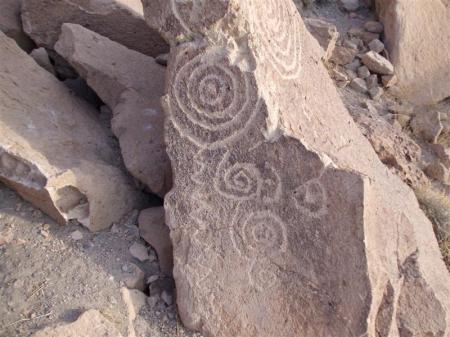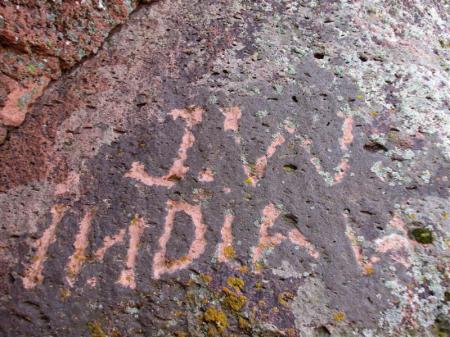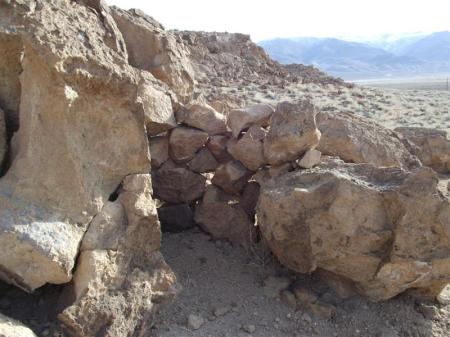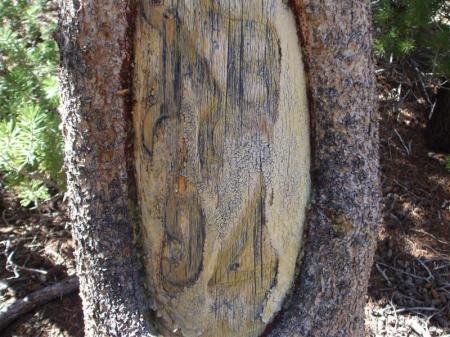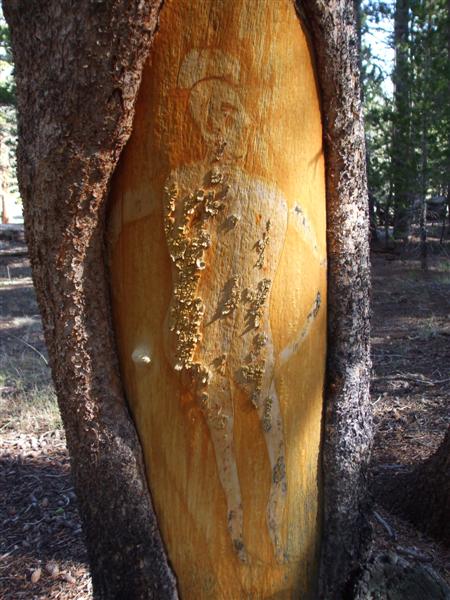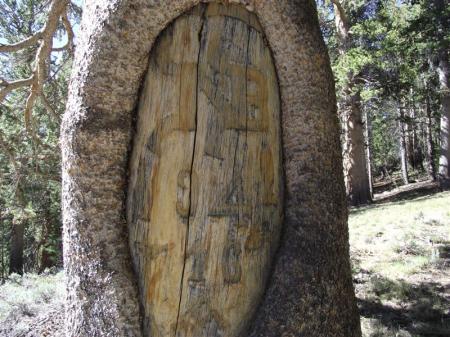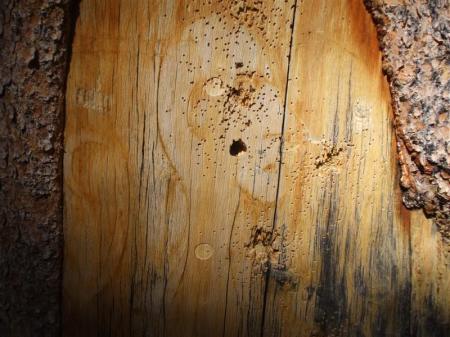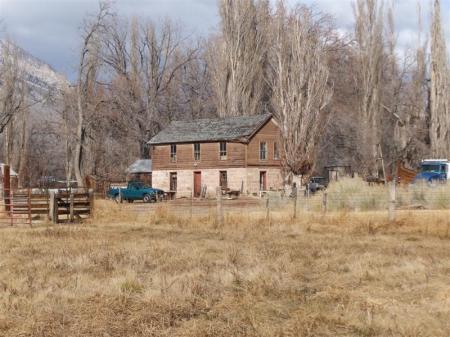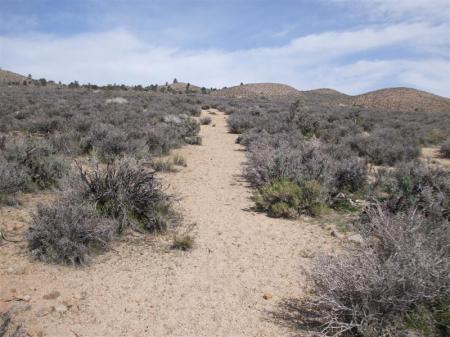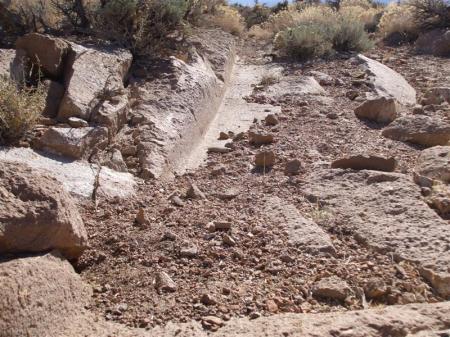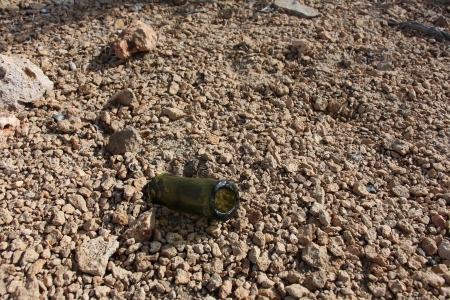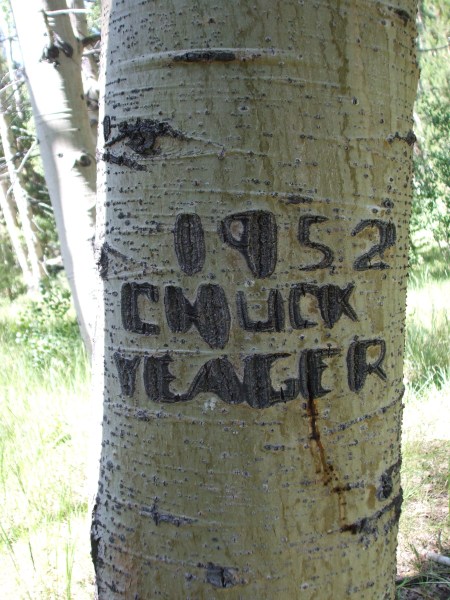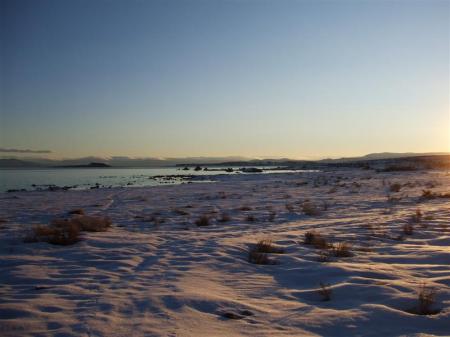How we all long to get away from it all and go camping. It is so ingrained into our national psyche that the phrase, “Happy Camper” denotes whether we are doing well or not.
When kids grow up to be adults they always remember those times out camping with the family, if they were so fortunate to do so.
It is the place that is remembered where one can go to re-create himself or herself in the midst of the American recreation world of fun.
That is why there are generations telling stories about camping experiences and how they came back to the same places all of their lives often bringing children and grandchildren.
One of those favorite places to recreate is in the Eastern Sierra of California that affords both desert and mountainous terrain to explore.
It is an impressive land called Inyo by the native people meaning, “Dwelling Place of the Great Spirit.” And indeed it is with its radical escarpment, giant peaks and volcanic-glaciated terrain.
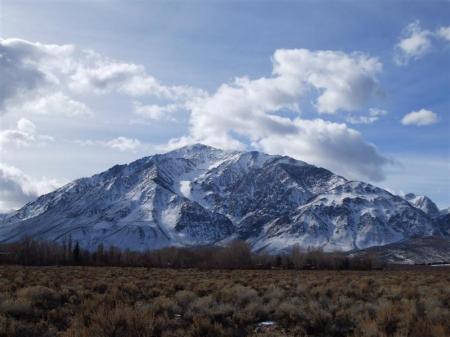
It is also a land where ancient spirits roam places like the Volcanic Tableland, ten miles north of Bishop, where petroglyphs and signs of human habitation for thousands of years are evident.
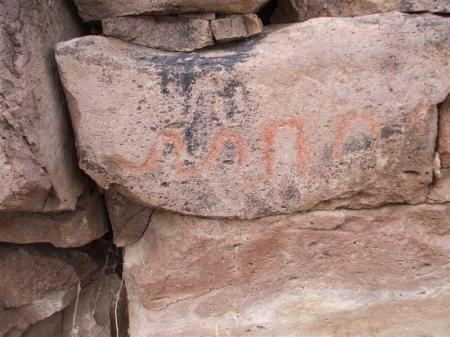
The list of activities is endless in the Eastern Sierra ranging from: camping (developed and dispersed), hiking, biking, equestrian and mule packing, OHV (Off Highway Vehicle), fishing, hunting, boating, scientific research, birding, rock climbing, hang gliding, soaring, golfing, snow skiing, exploring and many more.
While doing any of these wonderful activities one needs to know where to camp and what the top ten choices for campgrounds are for starters. Then you can search further and find other nice spots. So, here we go starting from the south end of the Inyo National Forest at Lone Pine heading north toward Bridgeport on the Toiyabe
1. Horseshoe Meadow:
One of the few remaining forest service run campgrounds left on the Inyo. All the others went to private concessionaires years ago, and they charge $23 now.
Horseshoe is still a great deal at $8 per night and is walk-in only. There are two separate campgrounds at the trailheads for Cottonwood Lakes and Cottonwood Pass. There is also a ten unit equestrian camp that is one of only two on the Inyo. This camp is very popular with the backcountry horsemen and equestrian folks from So Cal.
Mt Whitney hikers stay at Horseshoe overnight to acclimate before their ascent the next day, because it is at 10,000 feet.
The drive and views up the road to Horseshoe Meadow are incredible. Walt’s Point, high up the road, is a favorite hang gliding take off spot. The high elevation, immediate entrance to the Golden Trout Wilderness, and outstanding scenery make Horseshoe Meadow a prime camping location for those who live close to the Southern Sierra.
2. Onion Valley:
The Sierra gains magnificent heights out of the quaint little town of Independence and over Kearsarge Pass. The drive up is as spectacular and breathtaking as the Horseshoe Meadow road past older closed roads that go to defunct mines.
The campground at Onion Valley is small but still retains its old days charm with nice, new bathrooms.
Onion Valley is a fine riparian area with streams and springs bubbling up all over. Everything out of the campground is straight up and gains expansive views of the Owens Valley.
Not far from Independence is the Sawmill Trailhead and Division Creek power plant. This is a real nice area to disperse camp for free.
The usual rule for dispersed camping, which is everything outside of the developed campgrounds, is try to use an existing fire ring, and make sure to have a California Campfire Permit, good for a year and available at forest service and forestry offices. Always pay close attention to fire restrictions which are usually posted along all the roads.
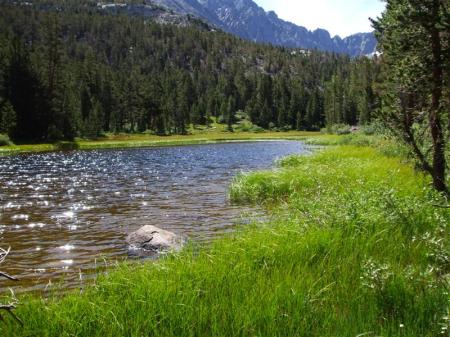
3. Goodale-Taboose:
These BLM campgrounds are grouped together, because they are so close to one another. They are low elevation camps in the Owens Valley along creeks with thick brush and lava flow formations.
Taboose is a tuber that the Paiute people ate and actually irrigated. It was one of the first forms of irrigation the settlers saw when they moved into the valley in the 1860s.
The Taboose Pass Trail is famous for being a real heart rate experience. The first two miles trudging in soft sand and no shade up to the first creek is killer when it is hot.
There is just no let up in that trail all the way to the pass, when one encounters large fields of obsidian flakes left by the ancient Trans-Sierra traders.
One of the marvels of this area in spring is the vast fields of Mountain Lupine which grows in areas previously burned by fire.
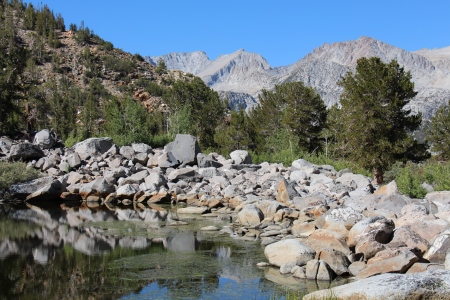
4. Big Pine:
Home to the Palisade Glacier, Lon Cheney cabin, entrance to the Bristlecone Pine Forest and Westgaard Pass, the only highway through the White Mountains.
All the campgrounds in Big Pine Canyon are nice. The one up where Glacier Lodge used to be is probably the best. There is a nice little pack station by the campgrounds, too.
Big Pine Canyon is laid back and very different than its neighbors to the north. Yet, it has some wonderful areas to hike that cater to every ability from beginner to expert. Nice waterfalls and lakes abound on all the trails up there.
There is even an upper walk-in campground that they used to drive to years ago. It is a short, steep hike from the trailhead at the end of the road.
On the north fork trail is the Lon Cheney cabin that the actor had built in the 30s and still stands in perfect condition today.
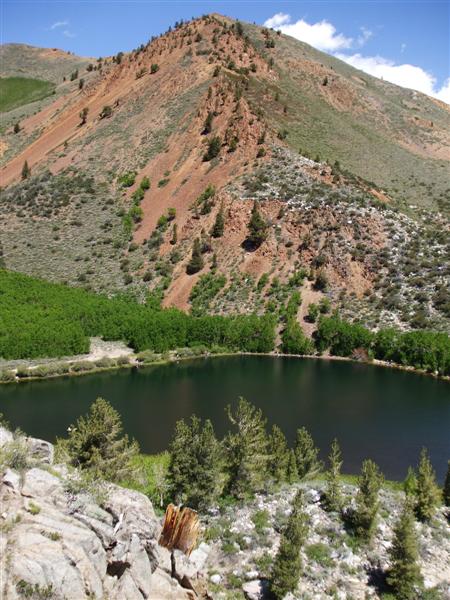
5. Bishop Creek Canyon:
Most people traveling along Hwy 395 are on their way to Mammoth and not as many venture up into Bishop Creek Canyon or the more remote OHV areas in the Coyote Mountains.
With three lake destinations, Bishop Canyon is loaded with campgrounds from Bitterbrush at the lowest elevation to North Lake at the highest.
Bishop Park is one of the nicer ones near the popular fishing spot, Intake II. Most of the campsites are right along the creek in the big Jeffrey Pine trees.
One of the most beautiful camping areas is Table Mountain Group Camp. This is a walk-in with its own meadow, stream and fine, tall mountains rising up from it. Few campgrounds attain this type of splendor.
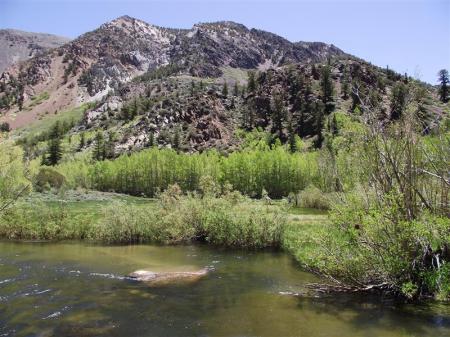
Group camps are the best deal going for five to twenty five people. The cost is affordable when split by the group, and they get their own campground reserved just for them. It doesn’t get any better.
6. Rock Creek Canyon:
On the way to the Rock Creek Lake junction at Toms Place is Pine Creek Canyon. There are no campgrounds there but some excellent dispersed sites along the creek.
Pine Creek was home to the Union Carbide Mine, now defunct, and has a pack station that covers some of the most rugged and beautiful mountains in the Sierra.
Rock Creek Canyon is number one on the best place to go and camp in the Eastern Sierra. It, too, has a multitude of campgrounds, lodges and western scenery at its finest.
French Camp (7,000 feet) is at the entrance to the canyon and is at a much lower elevation than Mosquito Flat (10,000 feet) at the end of the road where the trail to Little Lakes Valley begins.
Mid way up the road are perhaps the nicest little campgrounds at Upper and Lower Corral. The old lodge and cabins are there near the campgrounds in the thick of the Lodgepole trees.
The meadow and views of the mountains at the end of the valley at Upper Corral are incomparable. The whole area is just like a beautiful Japanese landscape garden with sand, boulders and ancient Juniper trees.
Some of the best hiking is to be had in all the side canyons of Rock Creek including the Tamarack Bench and Hilton Lakes.
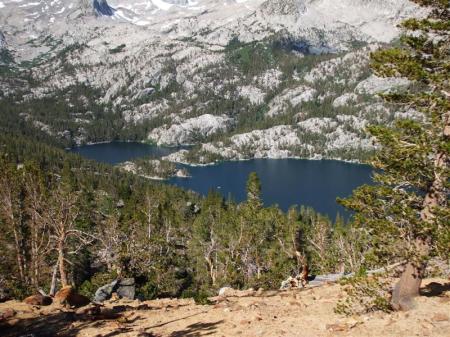
7. Mammoth Lakes:
If Rock Creek is the nicest area to camp, then the Mammoth area is definitely runner up. Campers like it, because it has the Lakes Basin and Reds Meadow for camping and the town for all the amenities that a large ski resort would have.
Reds Meadow is spectacular with the Devil’s Postpile and numerous campgrounds along the San Joaquin River.
At the end of the road is the Reds Meadow campground, nearby store and Mule House Café. Buses are running all day long, and it is easy to get around in the valley.
Reds Meadow Campground is still like it always was in a semi-primitive state but with nice bathrooms and flush toilets. All the campgrounds in the valley are cozy, but Reds Meadow, with its nearby hot spring bath house is the best.
Agnew Group Camp is the other good choice in the valley. It is set way back in an absolutely superb area with huge Fir trees and very private.
8. June Lake:
June Lake is like the little gem of the Eastern Sierra without the visitor pressure that its sister Mammoth gets 20 miles to the south. There are Silver, Grant, Gull and June Lakes in the loop and many campgrounds to choose from.
Oh Ridge Campground at the entrance to the town is a good one and has its own little beach with the bluest, coldest water. The word for this place in summer would have to be “refreshing.”
A lot of wealthy, famous people hung out in June Lake in the 30s and 40s. Walter Lantz and Frank Capra had summer homes on Millionaires Row at Silver Lake. Clark Gable, Carol Lombard and all their friends used to pack up to Little Hollywood on Gem Lake to hunt, fish and party.
No doubt about it that June Lake has the most charm of all the towns in the Eastern Sierra.
There are many free campgrounds around June Lake like Big Springs, Deadman, Glass Creek and Hartley Springs to the south.
Walker Lake trailhead to the north is really nice now since they fixed it up with nifty little camp units.

9. Lee Vining:
This is the gateway to Yosemite and perhaps the most popular junction in summer. It also has ancient Mono Lake and many a photographic moment in every sunrise and sunset.
Nearby, the Mono Craters are a reminder of the cataclysmic forces of nature that have shaped the Eastern Sierra. And in the mountains of the Sierra are the polished granite surfaces left from the glaciers that carved it.
That is why everyone heads for Saddlebag Lake Campground to get close to Yosemite and the Range of Light.
A little side trip that is highly recommended in between June Lake and Lee Vining on Hwy 120 East is Old Benton Hot Springs. This town is the next best thing to its cousin Bodie up the road and has a history that equals it with the mining that went on at Blind Springs Hill in the 1860s. Each campsite in the town has its own hot spring tub. It does not get any better than sitting in one of those hot tubs and looking up at Boundary Peak, the highest point in Nevada.
10. Lundy, Virginia Lakes, Green Creek:
These areas on the northeast end of Yosemite National Park are rugged, loaded with history and superb in their own right. There are not many developed campgrounds out there and that is the way they like it on the Toiyabe National Forest.
Lyin’ Jim Townsend, the famous pioneer journalist, called Lundy home for awhile. He created a big bonanza fictional town in his newspaper complete with scandals, murders, and corruption to influence would be stock investors in London. It worked!
Virginia Lakes is an area of shale and volcanism like most of the Sierra. I found a Spanish style arrastra there years ago off the trail where they used burros to grind ore by making them walk around in a circle, dragging a heavy rock.
Green Creek is really mellow like Virginia Lakes and Lundy Canyon. It is near the Bodie turnoff and is steeped in history with one of the first dams for a power plant operation.
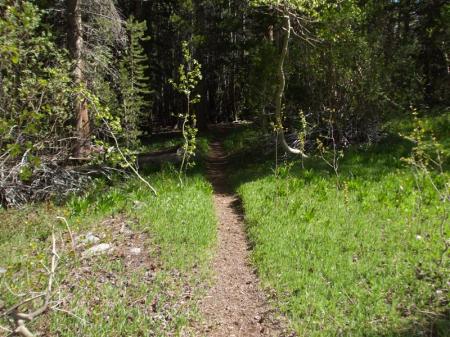
Well, that about covers all that I can share with you about camping in the Eastern Sierra from my many years of living there.
What you need to do before you go camping is check out the appropriate websites to find out the opening/closing dates. fees, and whether reservations are required or not.
Some camps are still first come-first served, and you can find that out on the websites as well.
Remember this, my camping friends, “Families and friends who camp and hike together, stay together.” Happy camping!

